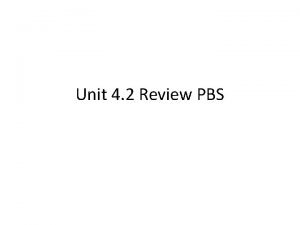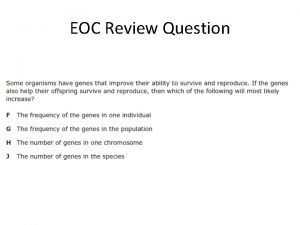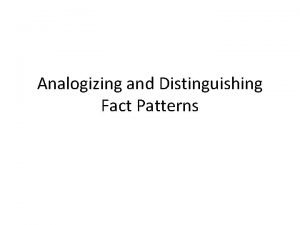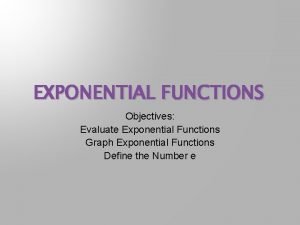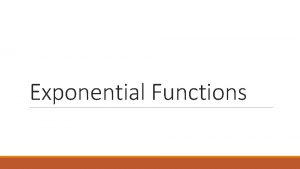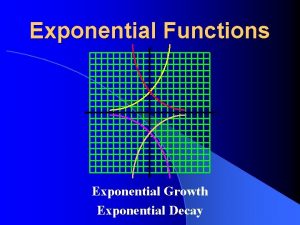EOC Review Distinguishing Exponential Linear from Context Exponential










- Slides: 10

EOC Review: Distinguishing Exponential & Linear from Context

Exponential or Linear? Sometimes we need to identify whether a table is displaying data that follows an exponential or a linear pattern. Look for key words & patterns.

KEY TERMS EXPONENTIAL LINEAR • GROWTH/DECAY • CONSTANT PERCENT RATE • EACH, EVERY, RATE, PER • CONSTANT RATE OF • DOUBLES/HALVES • SLOPE OF CHANGE

TABLE PATTERNS EXPONENTIAL LINEAR • LOOK FOR A CONSTANT • (*sometimes will look like MULTIPLYING PATTERN dividing because it is multiplying by a fraction) ADDING PATTERN subtracting because it is adding a negative)

Example: E#1. 1 Check the pattern in the table. Which type of function best models the data shown in the table? A. a linear function, because y is changing at a constant rate per unit interval of x B. a linear function, because y is changing at a constant percent rate per unit interval of x C. an exponential function, because y is changing at a constant rate per unit interval of x Eliminate contradictory answers: B. Linear ≠ constant PERCENT rate C. Exponential ≠ constant rate changing at a constant percent rate per unit interval of x D. an exponential function, because y is x y 0 4 2 14 3 19 5 29

Example E#1. 2 Three students in a class collected results from three labs numbers. The table below shows the results each student collected. Notice the question is looking for exponential… so look for a multiplying pattern. Which student collected data that would best be modeled by an exponential function? A. Olivia C. Tyasia B. Maleek D. None of them Olivia Maleek Tyasia Lab 1 Lab 2 Lab 3 120 90 200 240 120 210 480 150 200

You Try! • Mark key terms. • Look for patterns in the table.

Check it E#1. 3 • Which type of function best fits the data in the table below? • • A. exponential decay model B. exponential growth model C. linear model with positive slope D. linear model with negative slope x y -2 80 -1 20 0 5 1 1. 25

Check it: E#1. 4 • Which type of function best fits the data in the table below? • • A. exponential decay model x y 0 0. 15 B. exponential growth model 1 0. 6 C. linear model with positive slope 2 2. 4 3 9. 6 D. linear model with negative slope

Check it: E#1. 5 Four students in a class charted the results of four races. The table below shows the data each student charted. Race 1 Race 2 Race 3 Race 4 Jojo 120 sec. 110 sec. 100 sec. 90 sec. Nono 180 sec. 200 sec. 100 sec. 90 sec. Niko 240 sec. 120 sec. 60 sec. 30 sec. Which student charted data that would best be modeled by a linear function? A. Jojo B. Nono C. Niko D. None of them
 Florida us history eoc review
Florida us history eoc review Pbs eoc review
Pbs eoc review Gilded age eoc blitz review
Gilded age eoc blitz review Us history eoc review notebook
Us history eoc review notebook This area along the german/belgian border was demilitarized
This area along the german/belgian border was demilitarized Us history staar eoc review
Us history staar eoc review In calling shantytowns hoovervilles people conveyed their
In calling shantytowns hoovervilles people conveyed their Physical science eoc study guide
Physical science eoc study guide Physical science eoc review
Physical science eoc review Hbs eca study guide
Hbs eca study guide Civics.360
Civics.360

